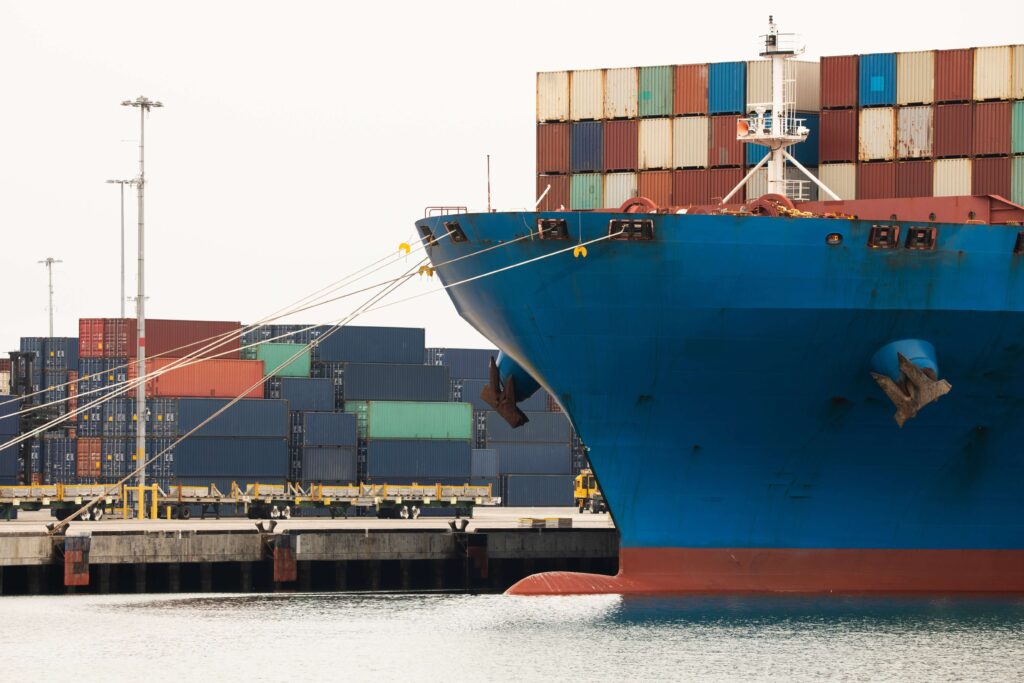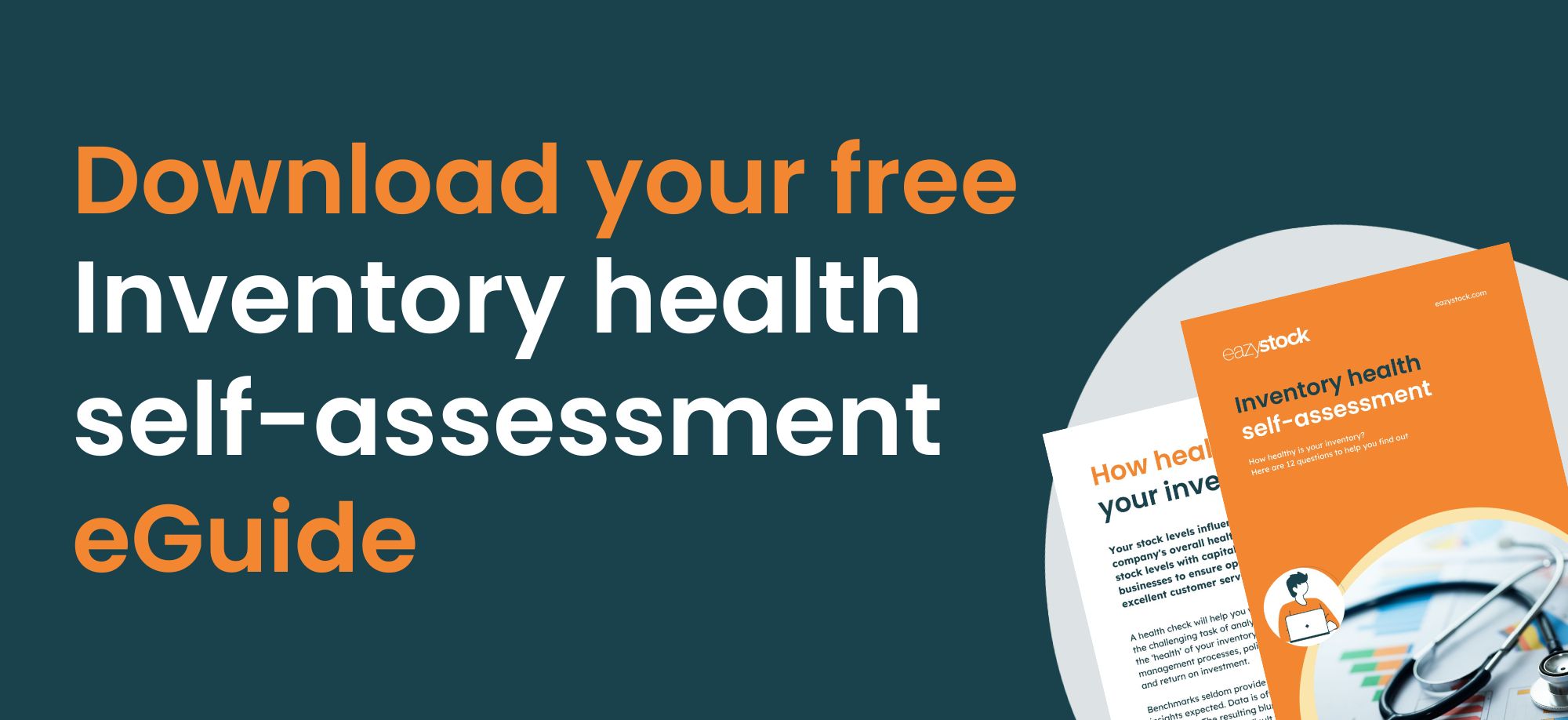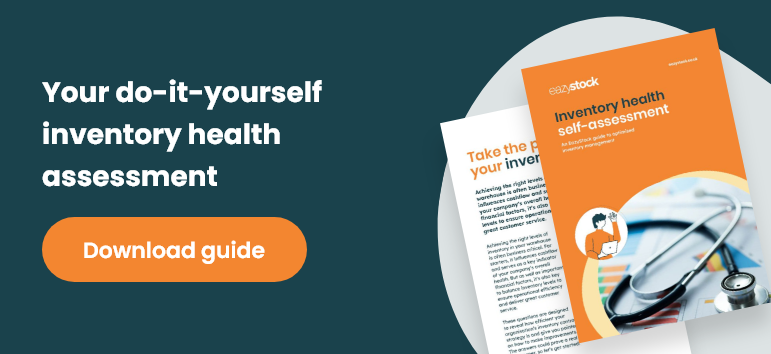The causes of excess inventory
8 reasons you’re carrying too much inventory
What is excess inventory? Excess inventory refers to when stock for an item significantly exceeds expected demand. There are many disadvantages of carrying excess inventory, including inefficiencies and operational and financial strain, especially with slow inventory turnover. It ties up capital, restricts cash flow, raises carrying costs, and increases the risk of obsolete inventory, which in turn, impacts profit margins.
In this blog, we explore how businesses accumulate excess inventory and fall into the associated traps. Before delving into root causes, let’s examine the signs of excess inventory.
How do I know if I have excess stock?
There are three simple signs that you have excess stock.
- Overcrowded warehouse
The easiest way is to look in your warehouse. Less warehouse space for new deliveries or items spilling into other items’ space could be a sign. If you can’t sell this stock, you won’t have space for the stock you actually need.
- Financial pressures
Increased stock investment reduces the availability of working capital and impedes cash flow. Less money is available to invest in other business areas, which could mean you need to take on debt to meet business objectives.
- Daily inventory management stress
When you have an overcrowded warehouse and financial pressures, these create issues for inventory managers. Trying to find ways to get the right stock in to meet demand while getting rid of excess stock can be tricky if you don’t have the time to get to the cause. This can lead to more excess stock and potential stock outs, both of which increase financial pressures and stressful workloads.
However, it’s helpful to classify your stock into non-stocked and stocked items to identify if you have excess stock and where.
- For non-stocked items, your aim will be to hold no stock and only order when necessary. If you have any stock of these items on hand, this is excess stock.
- For stocked items, any stock above the maximum stock level – cycle stock plus safety stock – is excess stock.
It’s important not to confuse excess stock with safety stock. Safety stock or buffer stock acts as insurance to meet unexpected demand surges or supply disruptions without risking excess stock. These additional stock levels are calculated based on demand to minimize disruption to order fulfillment while investing the lowest possible amount of capital in inventory.
What are the causes of excess inventory?

Does your business have excess inventory but can’t work out why? Here are eight reasons you could be consistently overstocking.
1. Poor forecasting methods
Inaccurate demand forecasts often lead to carrying too little or too much stock. Poor inventory forecasting is usually due to not having the right tools for the job, e.g. you lack adequate demand forecasting software or are trying to use spreadsheets for complicated calculations. This may be because your enterprise resource planning (ERP), inventory management system, or warehouse management system (WMS) lacks the sophistication to forecast demand statistically.
2. Ignoring seasonality
Producing forecasts that ignore seasonal demand variations is another key reason for a build-up of excess inventory. Items have seasonal demand if they show recurring demand patterns over periods due to seasonal events, such as Christmas, Ramadan, Valentine’s Day, snow or hot weather.
If you fail to identify items affected by seasonal demand, your forecasts for these items will never be accurate. For example, if a store selling garden furniture to the US market bases its September forecast on the previous three month’s demand, without accounting for seasonality, it will over-forecast and end up storing excess stock until the following spring (or selling it off at a discount).
3. A lack of market understanding
Adding qualitative forecasting aspects, or the ‘human factor’, to every forecast is very important to prevent overordering. Qualitative forecasting models incorporate opinions, experience and market knowledge to give a well-rounded perspective to your forecasting.
For example, suppose the garden furniture store uses the best data-driven forecasting methods available, but the inventory management team doesn’t identify new competitors taking their market share or changes in trends affecting demand. They will overestimate demand and order too much stock, which leads to excess stock.
4. Product life cycle
All products go through a product life cycle, from market introduction, through growth, maturity and decline. At each stage, a product’s demand will change, e.g. demand usually grows as products establish themselves in the marketplace, stabilizes during maturity, and then often becomes erratic and starts to fall-off as the product enters decline.
Many inventory planners fail to recognize or consider the product life cycle in their forecasting. This is particularly risky as products enter decline and demand drops off. If forecasts and reordering parameters aren’t adjusted to mirror the falling sales, businesses can be left with excess stock, quickly becoming obsolete if demand disappears altogether.
5. Aiming for high service levels
Sometimes, businesses end up with excess inventory because of deliberate actions and business decisions. Stock availability is a key ingredient in helping businesses maintain high levels of customer satisfaction. Hitting service levels and fulfillment rates is often done at the expense of carrying too much stock.
Businesses often come to us and explain that they’re holding too much stock because they want to increase inventory on hand to achieve high stock availability levels. For some inventory management teams, the threat of running out of stock leads them to instinctively over-order.
6. Poor purchasing decisions
It’s easy to get carried away in supplier negotiations and focus on getting the best price for every order, even if there is no demand. One way to do this is through bulk buying. Before you know it, your warehouse is full of items you ‘bought for a bargain’, which need to be sold for a bargain at a discounted price.
Another issue could be a supplier’s minimum order quantity (MOQ), which means you get a good price but order more than you need. For example, if you will only sell 20 items over a year, but the MOQ is 60, you’ll end up with 40 excess items. This will cost you more in the long run, so finding suppliers to meet your order size will reduce this risk.
7. Supply chain disruption
With relentless supply chain disruption increasing supplier lead times, many companies over-order to help alleviate the disruption, deal with demand surges and maintain customer service. However, buying lots of items regardless of demand to mitigate the risks of stockouts will result in surplus inventory. When things return to some kind of ‘normal’, businesses will find they have excess stock and will be looking to lower their inventory levels accordingly. This is where safety stock is the better option.

8. Complex supply chains
Businesses with multi-layered or multi-site supply chains often find they carry too much surplus stock. This is often due to decentralized inventory control and purchasing. Adding a little extra stock to an order at each stage to cover any inaccuracies in demand forecasting or delays in supply of the supply chain adds up. The result is surplus stock at each layer of the supply chain, which in isolation may be small but, added together, amounts to substantial excess inventory.
How do I reduce my excess inventory?
Excess inventory can be very problematic, causing operational and financial complications that most businesses could do without. If you relate to any of the excess stock trigger events above, then reading our blog on how to reduce excess inventory is a good starting point to change.
You can also use inventory optimization software like EazyStock. EazyStock can take the pain out of inventory classification. It can also improve forecast accuracy thanks to advanced statistical algorithms that consider product lifecycle demand and trends. EazyStock automatically calculates your minimum and maximum stock levels without tying up unnecessary cash. Automate the calculation of reorder points, optimal order quantities, safety stock levels and more to improve your stock availability.
If you suspect you have excess inventory, then get in touch with our team at EazyStock. We’ll conduct a stock health analysis, where we’ll analyze your current stock and identify healthy, excess, and obsolete stock items. We’ll then provide you with actionable recommendations to improve stock levels.
For more information call +1 (844) 416-5000 or request a demo.











